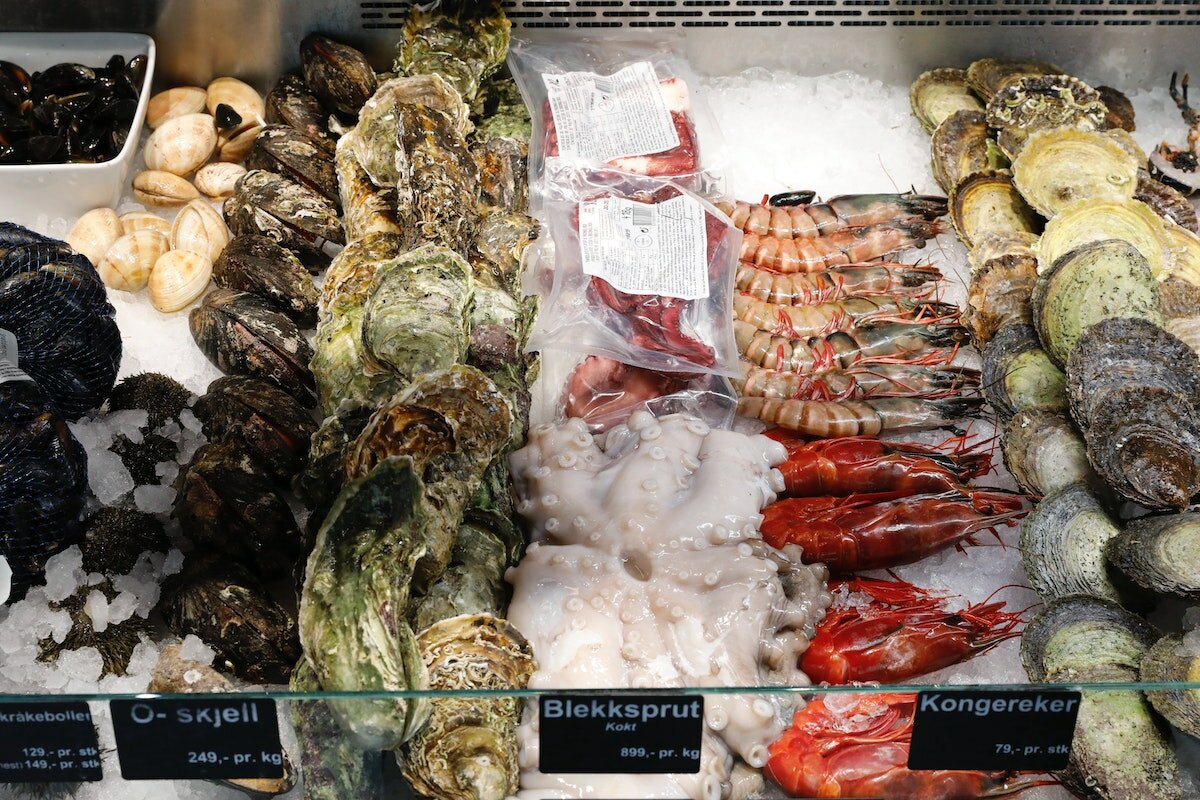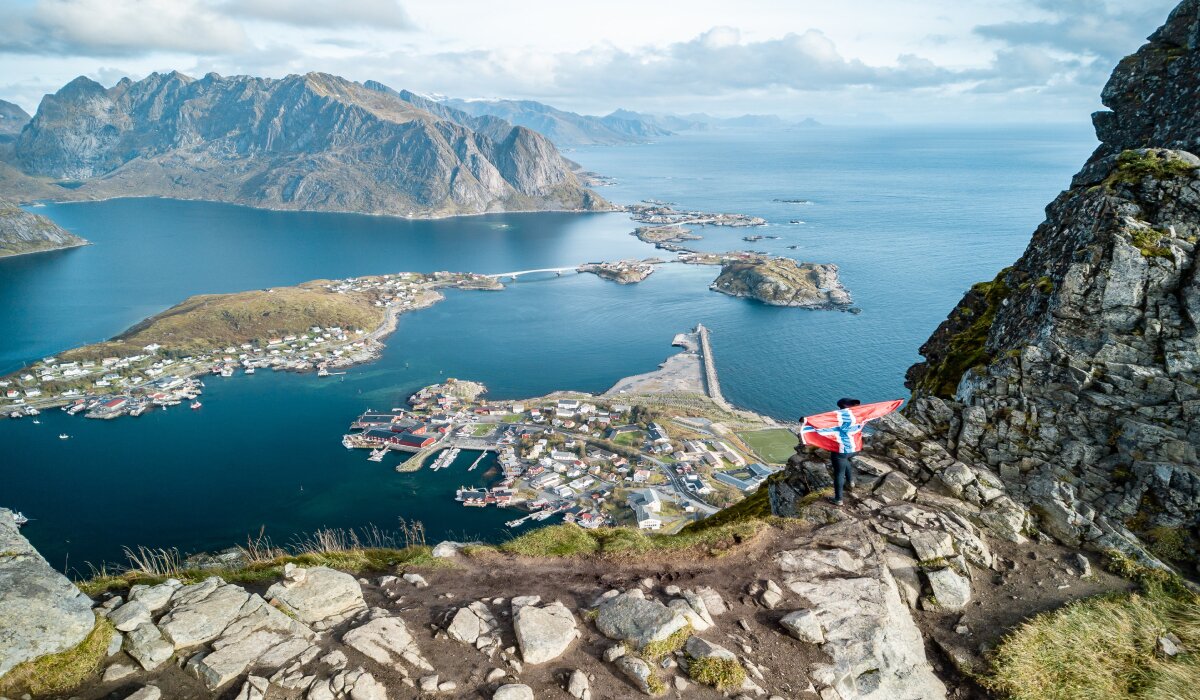In this article, we explore well-being in Norway through life expectancy, public health, and quality of life.
In order to study a country’s quality of life and public health status, we can look at a number of indicators. One of the most important of these is life expectancy.
Let’s start with life expectancy
The United Nations’ Human Development Index (HDI), for example, offers insights into the quality of life of humans across the world through sets of data for certain indicators, one of which is life expectancy.
World life expectancy at birth is, on average, 72.56 years. The EU average is 80.9 years. The world survival rate to age 65 is 81.34% for women and 73.67% for men.
Here are the top 50 countries for life expectancy at birth in 2019 (with the Nordic countries bolded):
- Hong Kong – 84.7
- Japan – 84.5
- Switzerland – 83.6
- Singapore – 83.5
- Spain – 83.4
- Italy – 83.4
- Australia – 83.3
- Iceland – 82.9
- Israel – 82.8
- Korea (Republic of) – 82.8
- Sweden – 82.7
- France – 82.5
- Malta – 82.4
- Norway – 82.3
- Canada – 82.3
- Ireland – 82.1
- Netherlands – 82.1
- New Zealand – 82.1
- Luxembourg – 82.1
- Greece – 82.1
- Portugal – 81.9
- Andorra – 81.8
- Finland – 81.7
- Belgium – 81.5
- Austria – 81.4
- Germany – 81.2
- United Kingdom – 81.2
- Slovenia – 81.2
- Denmark – 80.8
- Cyprus – 80.8
- Liechtenstein – 80.5
- Qatar – 80.1
- Costa Rica – 80.1
- Chile – 80
- Czechia – 79.2
- Barbados – 79.1
- United States – 78.9
- Lebanon – 78.9
- Cuba – 78.7
- Estonia – 78.6
- Maldives – 78.6
- Poland – 78.5
- Albania – 78.5
- Croatia – 78.3
- Panama – 78.3
- Dominica – 78.1
- United Arab Emirates – 77.8
- Uruguay – 77.8
- Oman – 77.6
- Slovakia – 77.4
What is the life expectancy of Norway?
Norway’s average life expectancy at birth, then, is 82.3 years.
Per World Bank data for 2018, the male life expectancy in Norway is 81.1, and the female life expectancy in Norway is 84.4.
What are the life expectancies of the other Nordic countries?
Denmark life expectancy
The life expectancy in Denmark is 80.8 years.
The male life expectancy in Denmark is 79.10, and the female life expectancy in Denmark is 83.4.
Finland life expectancy
The life expectancy in Finland is 81.7 years.
The male life expectancy in Finland is 79.10, and the female life expectancy in Finland is 84.6.
Iceland life expectancy
The life expectancy in Iceland is 82.9 years.
The male life expectancy in Iceland is 81.3, and the female life expectancy in Finland is 84.3.
Sweden life expectancy
The life expectancy of Sweden is 82.7 years.
The male life expectancy in Sweden is 80.9, and the female life expectancy in Sweden is 84.1.
All of the Nordic countries rank within the top 30 countries with the highest life expectancy.
Let’s dive deeper as to how exactly how they do it.
Contributors to the Nordic countries’ high life expectancy
Norway, Denmark, Finland, Iceland, and Sweden can attribute their high life expectancy largely due to three components: diet, exercise, and healthcare systems.
Diet
The Nordic food culture and diet generally consists of a balance of seafood, whole grains, nuts, veggies, and berries.
Some compare the Nordic diet to the Mediterranean diet. However, key differences between the Mediterranean and Nordic diets are that the Nordic promotes canola oil over olive oil and less alcohol consumption.
The Nordic diet additionally emphasizes organic produce, fruits and vegetables, and a healthy amount of high-quality meat (often game).

Here are some of the foods that are staples in the Nordic diet:
- Salmon: Nordic waters host an abundance of fish, but let’s take salmon as an example. The fish is loaded with omega-3 fatty acids, proteins, vitamins, and minerals, all of which contribute to a decreased risk in brain and heart disease, and inflammation.
- Root vegetables: Root vegetables can include carrots, potatoes, beets, turnips, and parsnips. They are readily available across the Nordic region due to their ability to grow in the countries’ cool climates. The veggies, which provide fiber, important vitamins and minerals, and carbs, help keep their consumers energetic and they’re also good for brain function. Nordic culinary traditions often include root vegetables in a stew or alongside game and fresh fish.
- Berries: Berries are not only packed with fiber, which is great for healthy digestion but are also easily locally sourced in Nordic countries – so they’re eaten at their best, fresh and organic. Some popular types include strawberries, blueberries, raspberries, lingonberries, gooseberries, currants, and cloudberries.
Exercise
It’s no surprise that the Nordic people love their nature – ‘stunning’ doesn’t even begin to describe it.
From summer hiking to winter skiing, each season brings with it fresh opportunities for exercise.

Many Norwegians (and other Nordic populations) also exercise on their way to work, opting for a bicycle, rollerblades, or a scooter, over a car.
This healthy trend has extended its way to major cities such as Oslo – traffic jams are nowhere near ones in New York or London, thanks to a reduction in car use (along with a much smaller population – but still!).
The Nordic countries prove that exercise is good for your health and for Mother Nature’s, as well.
Healthcare
Norway’s public healthcare system is considered one of the world’s best. All public hospitals are run by the government’s health division, with private hospitals and private health insurance being quite rare.
Contrary to popular belief, Norway’s health insurance isn’t completely free. Residents spend just over 2,000 NOK out of pocket annually, after which healthcare is covered by the government.
Denmark has a decentralized healthcare system, with the federal government responsible for legislation and supervision, while municipalities run health services, such as hospitals and insurance. Similar to Norway, each inhabitant must spend 1,000-1,500 DKK in order for treatments for the rest of the year to be covered.
Finland’s system is also decentralized, with certain services covered by private insurance. However, most health services are funded by taxation. Finland’s healthcare system also focuses on patient rights laws. The laws allow for patients to easily access information and medical documents, give informed consent, have the right to autonomy, and have the right to compensation for unforeseeable injury.
In Iceland, once you register with a general practitioner or GP, you’re essentially good to go. This is because most of the country’s healthcare system is paid through taxes, while the rest comes from service fees.
The Swedish healthcare system is divided; councils run the hospitals, while the country’s central government establishes guidelines and laws for healthcare. In terms of payment, the state covers the large majority of healthcare costs, while hospitalization charges for patients are limited to a low fee per day.
Organization, dedicated healthcare professionals, fair treatment, and fair payment all contribute to the success of the Nordic countries’ healthcare systems and, consequently, their life expectancies and qualities of life.

Causes of death in Norway
The ten most causes of death in Norway are:
- Ischemic heart disease
- Alzheimer’s disease
- Stroke
- Chronic obstructive pulmonary disease
- Lung cancer
- Lower respiratory infection
- Colorectal cancer
- Prostate cancer
- Falls
- Atrial fibrillation
Worldwide, many of these causes can be attributed to outdoor air pollution. Air pollution is a major cause of death, responsible for over 4 million deaths annually.
According to the World Health Organization (WHO), worldwide air pollution accounts for:
- 29% of all deaths and disease from lung cancer
- 17% of all deaths and disease from acute lower respiratory infection
- 24% of all deaths from stroke
- 25% of all deaths and disease from ischaemic heart disease
- 43% of all deaths and disease from chronic obstructive pulmonary disease
Five out of the ten causes of death in Norway (in bold) can be linked to global air pollution deaths, either in the form of lung or heart disease.
According to Numbeo, Norway’s air pollution is 18.64 and is still ranked very low, on a scale from 0 to 120. For comparison, China’s air pollution is 80.42 and is ranked very high.
In conclusion
All in all, it’s safe to say that Norway and the Nordic countries rank much higher than average on a global scale in terms of life expectancy, public health, and quality of life.
So, if you’re ready to move to Norway, as a foreigner, with a family or solo – we don’t blame you!
Source: Norway Today
Do you have a news tip for Norway Today? We want to hear it. Get in touch at [email protected]






Be the first to comment on "Norway’s quality of life, life expectancy, and public health – what you need to know"